Abstract
Transplant renal artery stenosis (TRAS) is an important cause of hypertension, allograft dysfunction, and graft loss. Patient and allograft survival rates are lower in patients with TRAS. Causes of TRAS include acute rejection, cytomegalovirus infection, calcineurin inhibitor toxicity, atherosclerosis of recipient, and/or donor. Technical problems due to surgery are a common cause of early TRAS. A 62-year-old male in end stage renal disease received kidney transplant surgery. There was 5/6 mismatch of human leukocyte antigen and the panel reactive antibody of patient was class I 0% and class II 0%. End to side anastomosis was done between the graft's renal artery and the patient's common iliac artery. His serum creatinine was measured at 6.4 mg/dL before transplantation but his serum creatinine level did not fall below 2.6 mg/dL at 5 days postoperative. His blood pressures was 160/90∼ 180/100 mmHg. There was a significant TRAS (about 80% luminal narrowing) at the arterial anastomosis site on the renal magnetic resonance angiography. We performed percutaneous transluminal angioplasty (PTA) for the stenotic lesion. The balloon angioplasty was done with a 5 mm balloon and low pressure (8 mmHg, nominal pressure was 10 mmHg) at the stenotic lesion. The arterial pressure gradient was 8 mmHg (recipient's common iliac arterial pressure, 147/73 mmHg; poststenotic segmental renal arterial pressure, 139/70 mmHg) just before the balloon angioplasty. After PTA, the arterial pressure gradient became 3 mmHg (recipient's common iliac arterial pressure, 157/66 mmHg; poststenotic segmental renal arterial pressure, 154/65 mmHg). The arterial size and blood flow recovered to within normal range and serum creatinine level was normal after PTA. PTA using low pressure and a small balloon was safe and effective modality in treating early TRAS.
Go to : 
REFERENCES
1). Luke RG., Curtis J. Biology and treatment of transplant hypertension. Laragh JH, Brenner BM, editors. Hypertension: pathophysiology, diagnosis and management. 2nd ed.New York: Raven Press;1995. p. 2471–83.
2). Aguera Fernandez LG., Zudaire JJ., Isa WA., Sanchez de la Muela PL., Rosell D., de Castro F, et al. Vascular complications in 237 recipients of renal transplant from cadaver. Actas Urol Esp. 1992. 16:292–5.
3). Fervenza FC., Lafayette RA., Alfrey EJ., Petersen J. Renal artery stenosis in kidney transplants. Am J Kidney Dis. 1998. 31:142–8.

4). Roberts JP., Ascher NL., Fryd DS., Hunter DW., Dunn DL., Payne WD, et al. Transplant renal artery stenosis. Transplantation. 1989. 48:580–3.
5). Bruno S., Remuzzi G., Ruggenenti P. Transplant renal artery stenosis. J Am Soc Nephrol. 2004. 15:134–41.
6). Smellie WA., Vinik M., Hume DM. Angiographic investigation of hypertension complicating human renal transplantation. Surg Gynecol Obstet. 1969. 128:963–8.
7). Becker BN., Odorico JS., Becker YT., Leverson G., McDermott JC., Grist T, et al. Peripheral vascular disease and renal transplant artery stenosis: a reappraisal of transplant renovascular disease. Clin Transplant. 1999. 13:349–55.

8). O'Connell TX., Mowbray JF. Arterial intimal thickening produced by alloantibody and xenoantibody. Transplantation. 1973. 15:262–3.
9). Rengel M., Gomes-Da-Silva G., Inchaustegui L., Lampreave JL., Robledo R., Echenagusia A, et al. Renal artery stenosis after kidney transplantation: diagnostic and therapeutic approach. Kidney Int Suppl. 1998. 68:S99–106.

10). Wong W., Fynn SP., Higgins RM., Walters H., Evans S., Deane C, et al. Transplant renal artery stenosis in 77 patients: does it have an immunological cause? Transplantation. 1996. 61:215–9.
11). Gray DW. Graft renal artery stenosis in the transplanted kidney. Transplant Rev (Orlando). 1994. 8:15–21.

12). Loubeyre P., Abidi H., Cahen R., Tran Minh VA. Transplanted renal artery: detection of stenosis with color Doppler US. Radiology. 1997. 203:661–5.

13). Bruno S., Ferrari S., Remuzzi G., Ruggenenti P. Doppler ultrasonography in posttransplant renal artery stenosis: a reliable tool for assessing effectiveness of revascularization? Transplantation. 2003. 76:147–53.
14). O'Neill W C., Baumgarten DA. Ultrasonography in renal transplantation. Am J Kidney Dis. 2002. 39:663–78.
15). Greenstein SM., Verstandig A., McLean GK., Dafoe DC., Burke DR., Meranze SG, et al. Percutaneous transluminal angioplasty. The procedure of choice in the hypertensive renal allograft recipient with renal artery stenosis. Transplantation. 1987. 43:29–32.
16). Clements R., Evans C., Salaman JR. Percutaneous transluminal angioplasty of renal transplant artery stenosis. Clin Radiol. 1987. 38:235–7.

17). Leertouwer TC., Gussenhoven EJ., Bosch JL., van Jaarsveld BC., van Dijk LC., Deinum J, et al. Stent placement for renal arterial stenosis: where do we stand? A meta-analysis. Radiology. 2000. 216:78–85.

18). Beecroft JR., Rajan DK., Clark TW., Robinette M., Stavropoulos SW. Transplant renal artery stenosis: outcome after percutaneous intervention. J Vasc Interv Radiol. 2004. 15:1407–13.

19). Ridgway D., White SA., Nixon M., Carr S., Blanchard K., Nicholson ML. Primary endoluminal stenting of transplant renal artery stenosis from cadaver and non-heart-beating donor kidneys. Clin Transplant. 2006. 20:394–400.

Go to : 
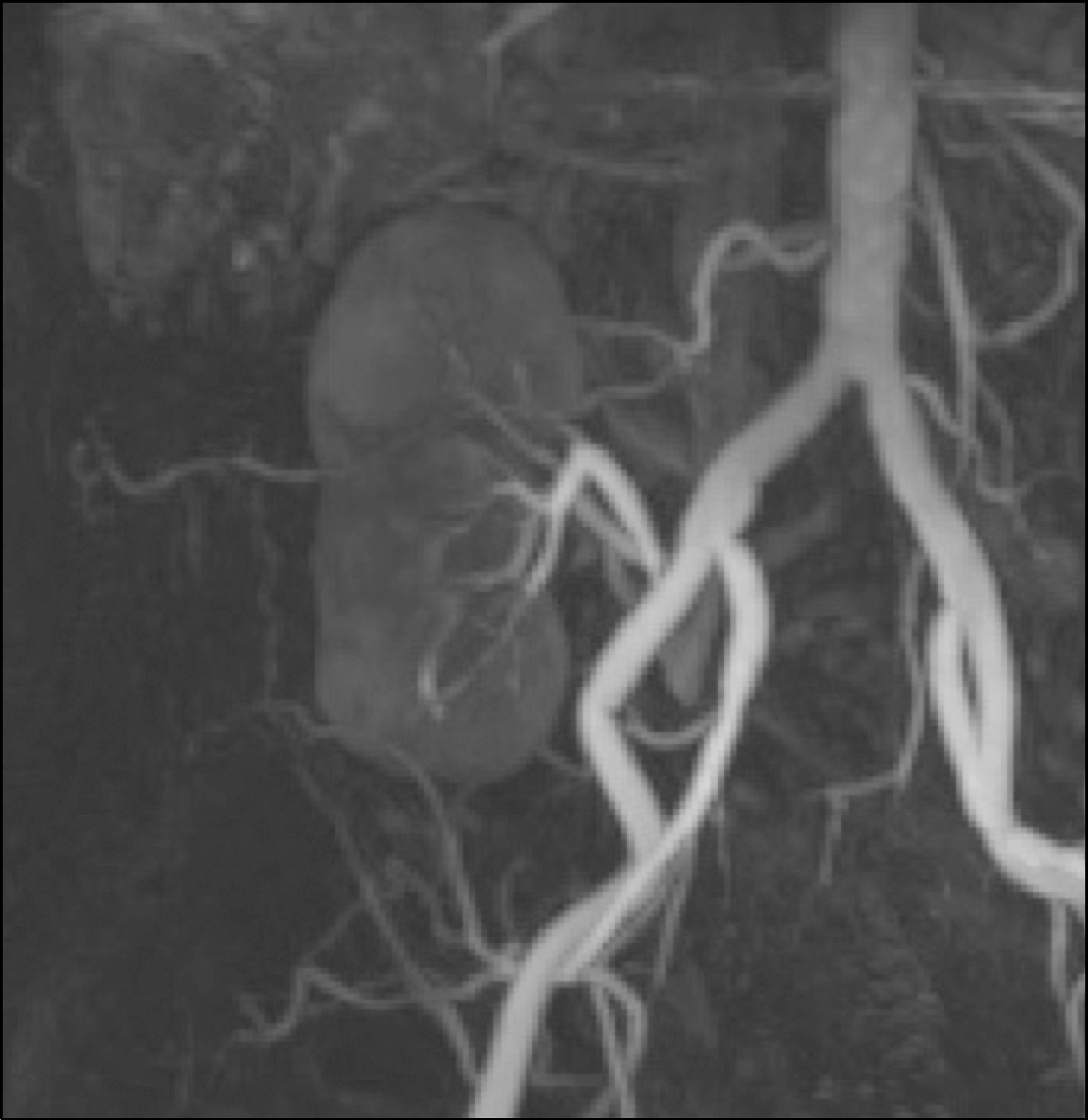 | Fig. 1.Magnetic resonance renal angiography of the transplanted kidney. Note that focal stenosis at anastomotic site between transplanted renal artery and right common iliac artery. |
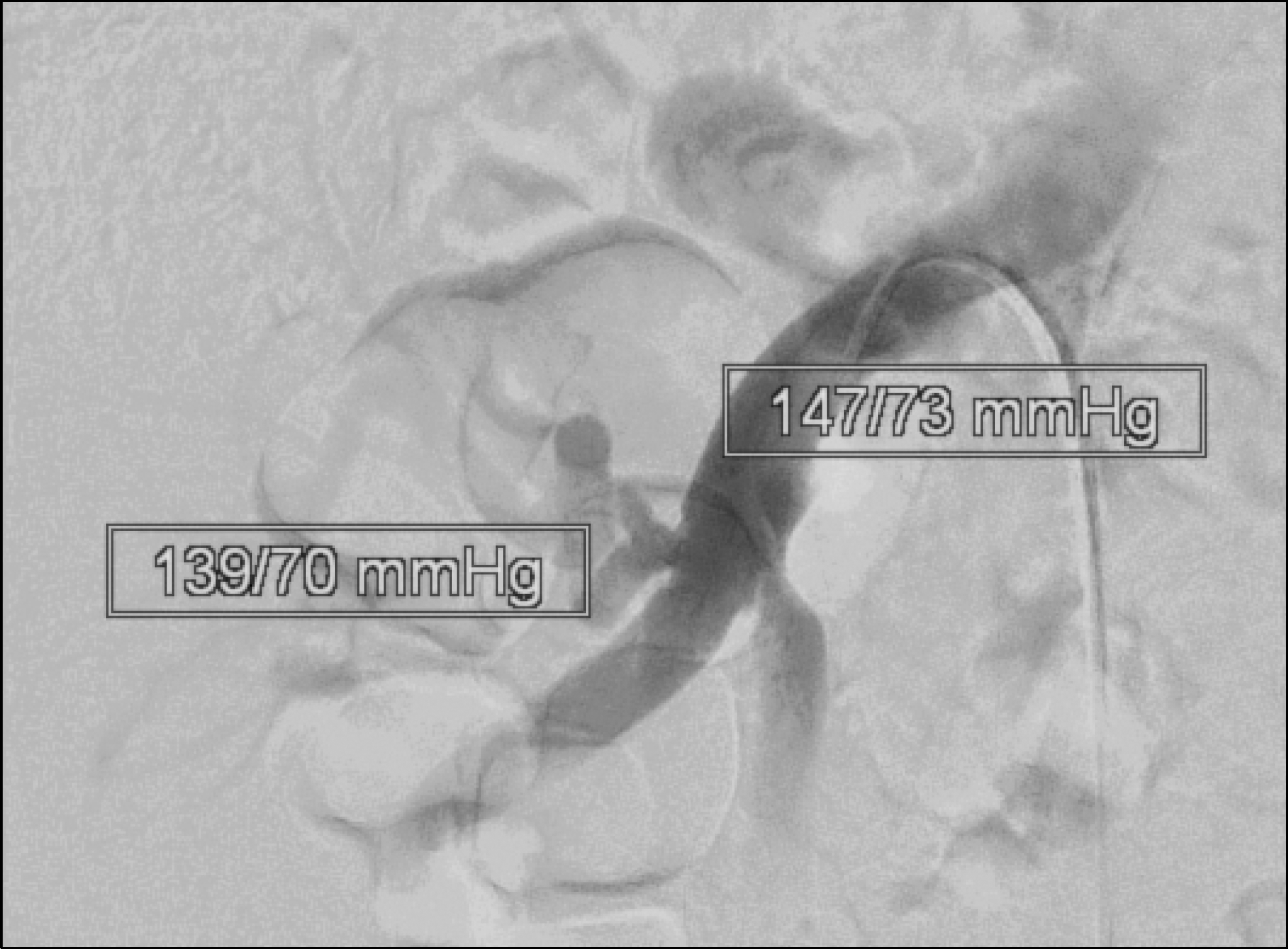 | Fig. 2.Renal angiogram of the transplanted renal artery. Pressure gradient between right common iliac artery and transplanted renal artery was checked. |




 PDF
PDF ePub
ePub Citation
Citation Print
Print


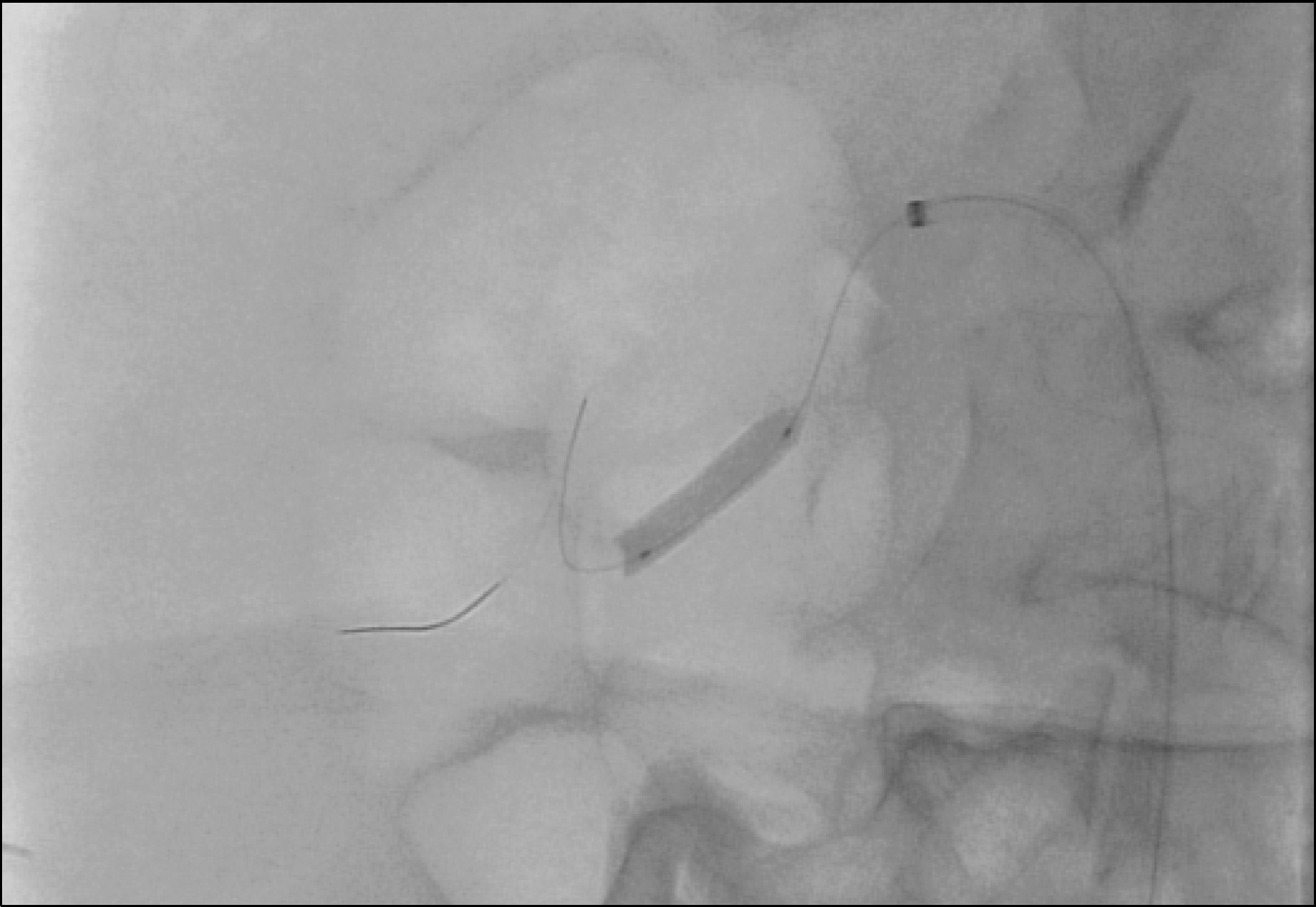
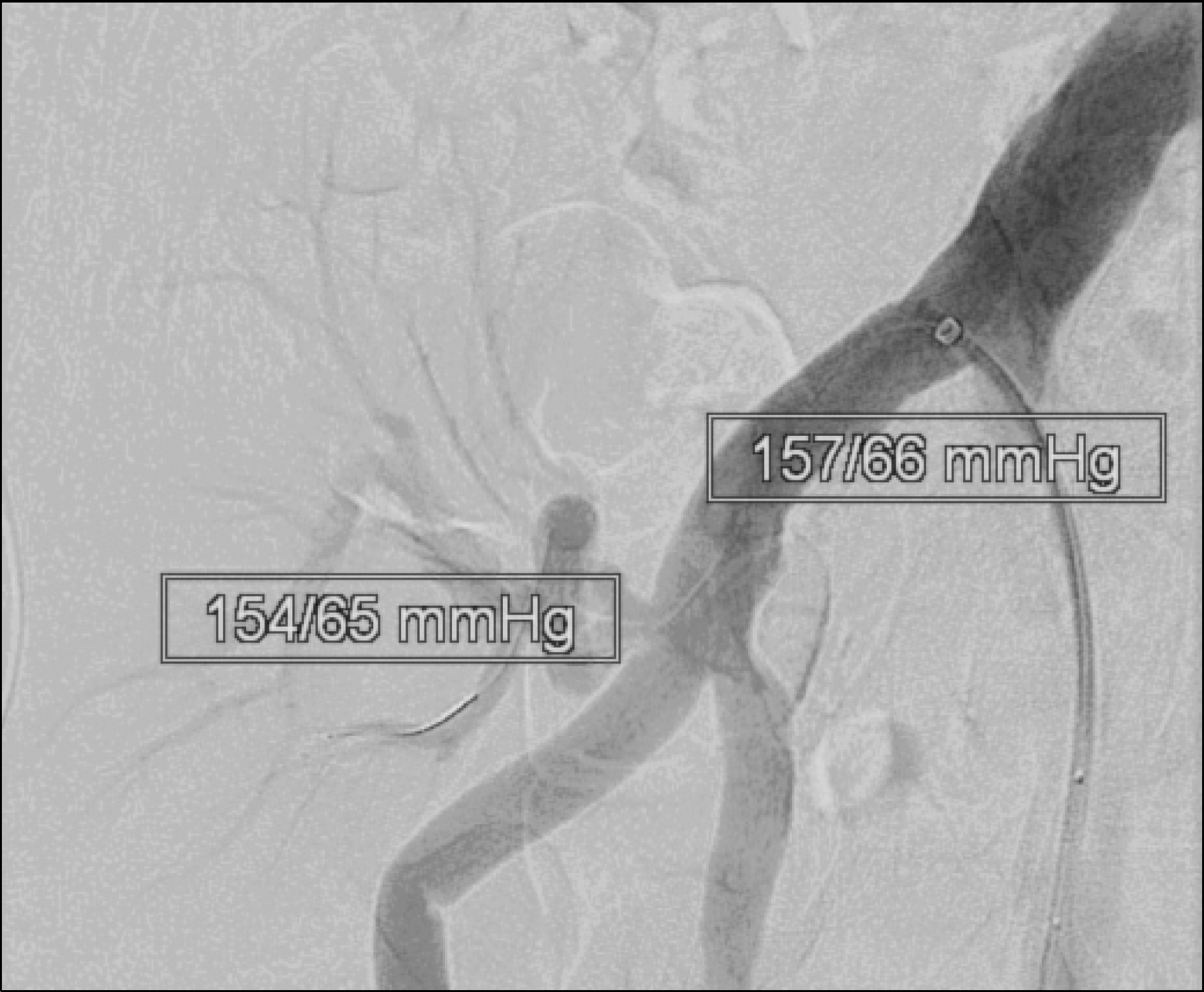
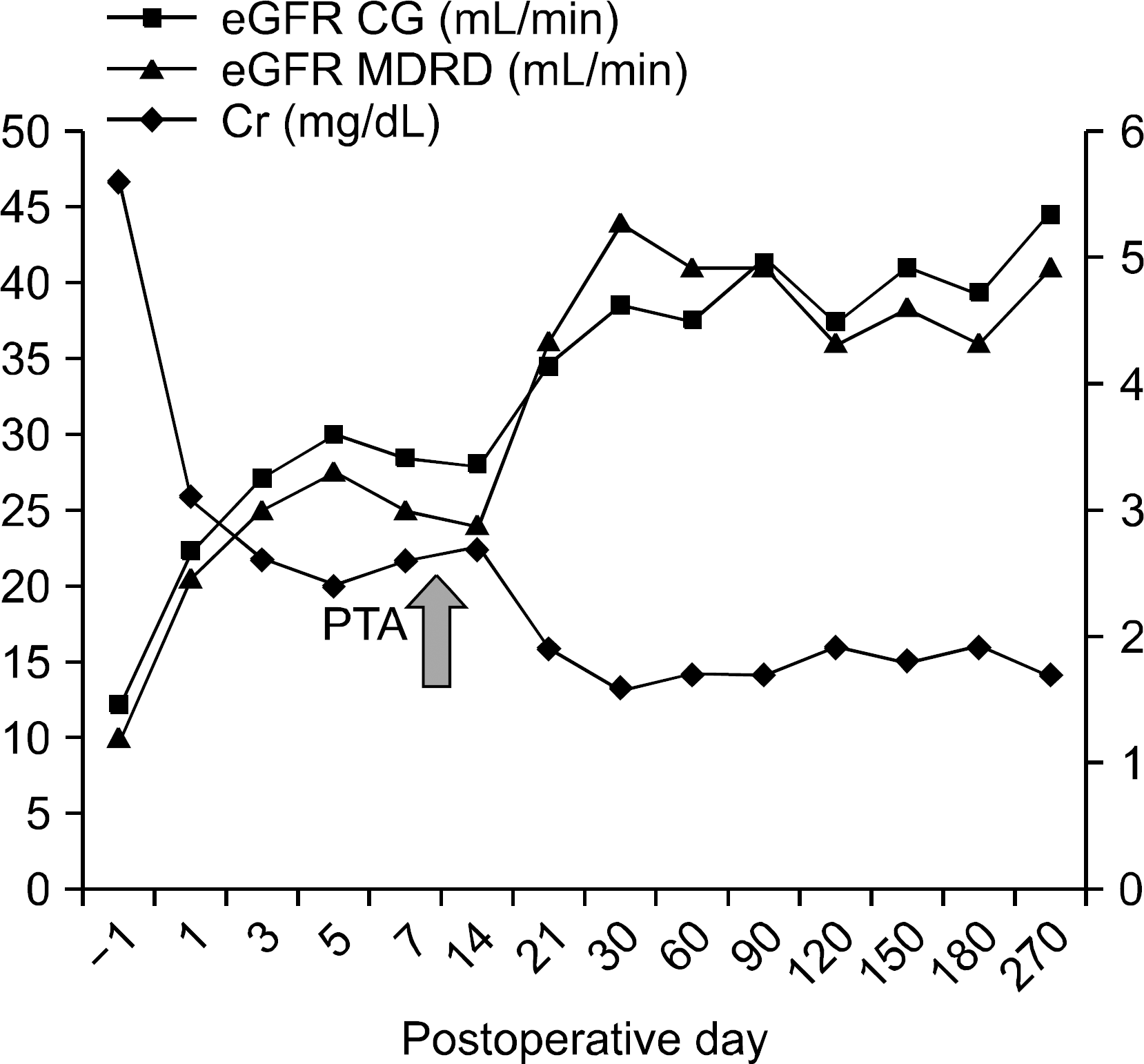
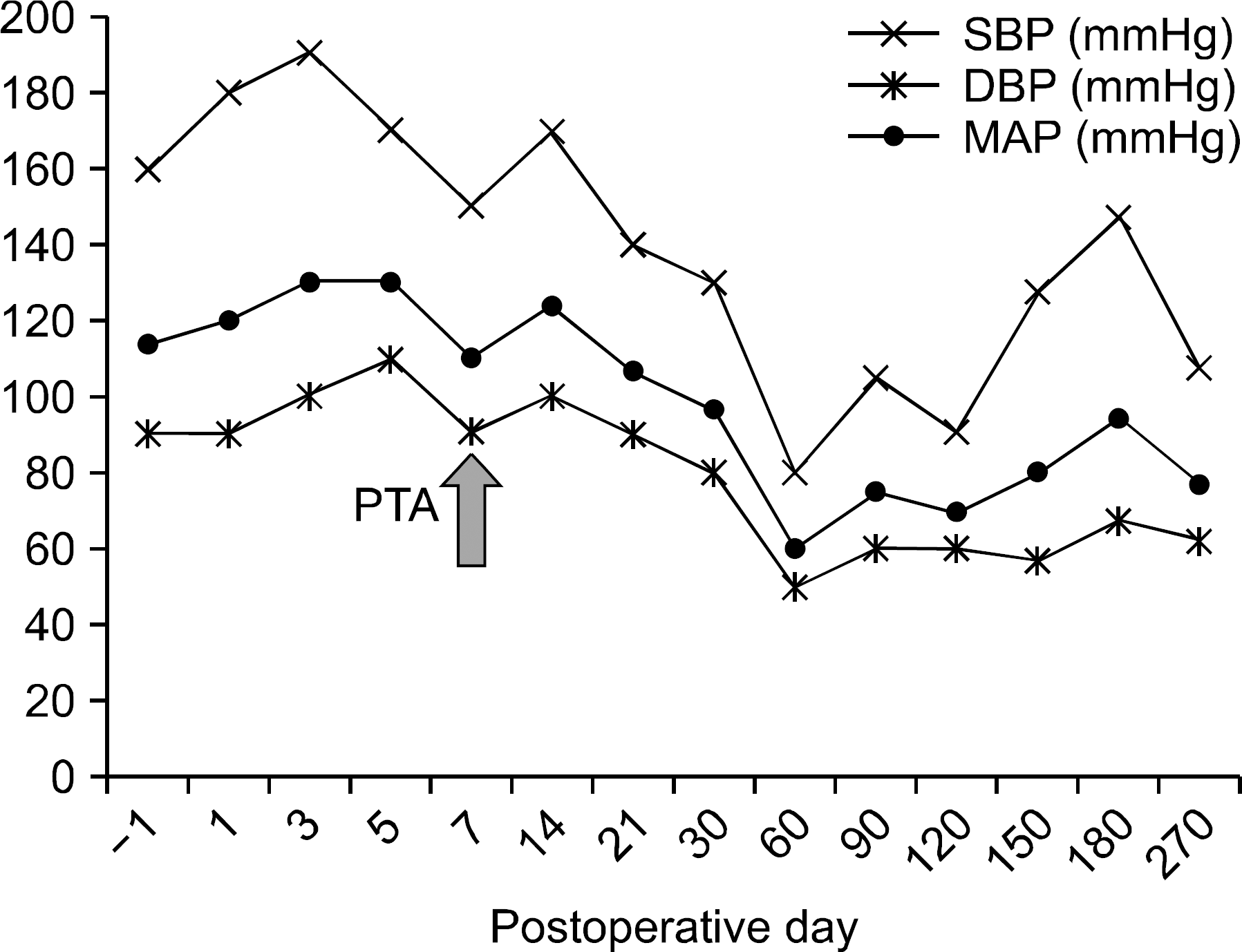
 XML Download
XML Download